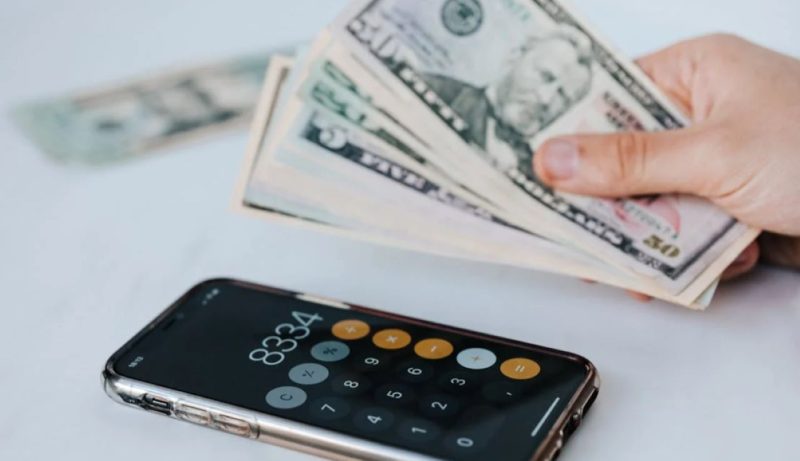In today’s financial landscape, high-interest loans, such as payday loans and credit card debts, about which you should learn here, continue to ensnare many in a vicious cycle of borrowing and repayment. Despite the well-known long-term costs associated with such financial products, a significant number of people still resort to them. The question arises: Why do individuals accept these seemingly bad deals? This blog post delves into the psychological underpinnings that drive this phenomenon, exploring the interplay of cognitive biases, societal factors, and emotional decision-making that lead many to fall prey to high-interest debt.

Understanding High-Interest Debt
High-interest debt typically refers to financial obligations that come with exorbitant rates of interest, significantly higher than conventional loans or credit lines. Examples include payday loans, which can have annual percentage rates (APRs) of several hundred percent, and credit card debt, which also carries high-interest rates for those who fail to pay off their balances monthly. These forms of debt are often easy to acquire but challenging to pay off, trapping borrowers in a cycle of endless interest payments and financial instability.
Cognitive Biases and High-Interest Debt
Cognitive biases play a critical role in financial decisions, particularly those involving high-risk and high-cost scenarios like high-interest borrowing. Several key biases contribute to poor financial decision-making:
1. Optimism Bias
Optimism bias is the tendency to believe that we are less at risk of experiencing a negative event compared to others. In the context of high-interest loans, borrowers often underestimate the risks of not being able to pay back these loans on time. They might think that future circumstances will change in their favor, such as expecting a pay raise or another source of income, leading them to believe they can cover upcoming bills or debts more easily than might actually be the case.
2. Present Bias
Present bias, or hyperbolic discounting, refers to the tendency to give stronger preference to immediate rewards over future ones, even when the latter are significantly larger. This bias explains why people opt for payday loans or credit cards for immediate financial relief, disregarding the long-term interest burden. The immediate alleviation of financial stress is often weighed more heavily than the future financial costs associated with the debt.
3. The Underestimation of Future Pain
Closely related to both optimism bias and present bias, people often underestimate the emotional and financial pain that will come with future debt repayments. This cognitive shortfall can lead individuals to make decisions that feel manageable in the short term but are detrimental in the long term.
4. Anchoring Bias
Anchoring bias occurs when individuals rely too heavily on an initial piece of information (the “anchor”) to make subsequent judgments. When first presented with the terms of a payday loan, the initial ease of approval and the promise of immediate cash can act as an anchor, overshadowing the less attractive aspects of the agreement, such as high-interest rates and fees.
Emotional and Psychological Factors
Beyond cognitive biases, emotional and psychological factors heavily influence the decision to take on high-interest debt. Financial desperation, stress, and the immediate need for cash can cloud judgment, leading to decisions that one might otherwise avoid.
1. Financial Desperation
For many, high-interest loans are a last resort in desperate times. Faced with an immediate financial crisis, such as an unexpected medical bill or car repair, the need for quick cash overshadows the cost of future repayments. The emotional weight of the moment, combined with financial stress, makes high-interest options appear as the only viable solution.
2. Lack of Alternatives
Perceived or real, a lack of alternatives plays a significant role in the decision to take on high-interest debt. Those with poor credit scores or unstable financial histories might believe that traditional loans with better rates are out of reach, making high-interest loans the only apparent option available.

Societal and Systemic Influences
The broader societal and economic environment also affects individual decisions regarding high-interest loans. Economic inequality, the structure of the credit system, and the regulatory landscape all play roles in shaping the options and decisions available to individuals.
1. Economic Inequality
Economic inequality can lead to disparate access to credit and financial services. Those in lower socioeconomic strata might not have the same access to low-interest credit options, pushing them towards high-interest alternatives as a necessary evil.
2. Marketing Practices
Aggressive marketing practices by lenders who offer high-interest loans can also warp perceptions and decision-making processes. These lenders often target vulnerable populations, emphasizing the ease and immediacy of loans over their long-term costs.
3. Regulatory Framework
The regulatory frameworks governing high-interest lending practices vary widely and can influence the prevalence and terms of such loans. In regions with less stringent regulations, higher rates of high-interest loans may predominate, trapping more people in cycles of debt.
Breaking the Cycle
Understanding the psychological, emotional, and societal drivers behind high-interest debt is crucial for both individuals and policymakers. On an individual level, increased financial literacy can help potential borrowers understand the long-term consequences of their borrowing choices and explore alternatives. On a systemic level, stronger regulations and better financial support systems can reduce the prevalence of high-interest loans and provide better safeguards for the financially vulnerable.
In conclusion, opting for high-interest debt transcends simple misjudgment; it is deeply rooted in a multifaceted mix of psychological influences, emotional pressures, and systemic conditions that shape financial decision-making. The propensity to accept unfavorable financial terms is often driven by a convergence of cognitive biases—such as optimism and present biases—that skew perceptions of risk and reward. Emotional distress and urgent financial needs further cloud rational evaluation, compelling individuals to prioritize immediate relief over long-term financial health.
Moreover, systemic factors, including socioeconomic disparities and aggressive marketing tactics by lenders, significantly contribute to the prevalence of high-interest debt. These lenders often target the most vulnerable populations, emphasizing immediate access to funds while downplaying the draconian interest rates and fees associated with their products. Additionally, in many areas, regulatory frameworks are either lax or favor the lenders, lacking sufficient consumer protections that would otherwise prevent predatory lending practices.
To effectively combat the scourge of high-interest debt, a comprehensive and holistic approach is necessary—one that encompasses educational initiatives, robust regulatory reforms, and the expansion of accessible, affordable financial services. Education plays a crucial role by enhancing financial literacy, enabling individuals to make more informed decisions about their finances. Improved understanding of the long-term consequences of high-interest debt and knowledge of alternative financial options can empower individuals to avoid detrimental financial products.
